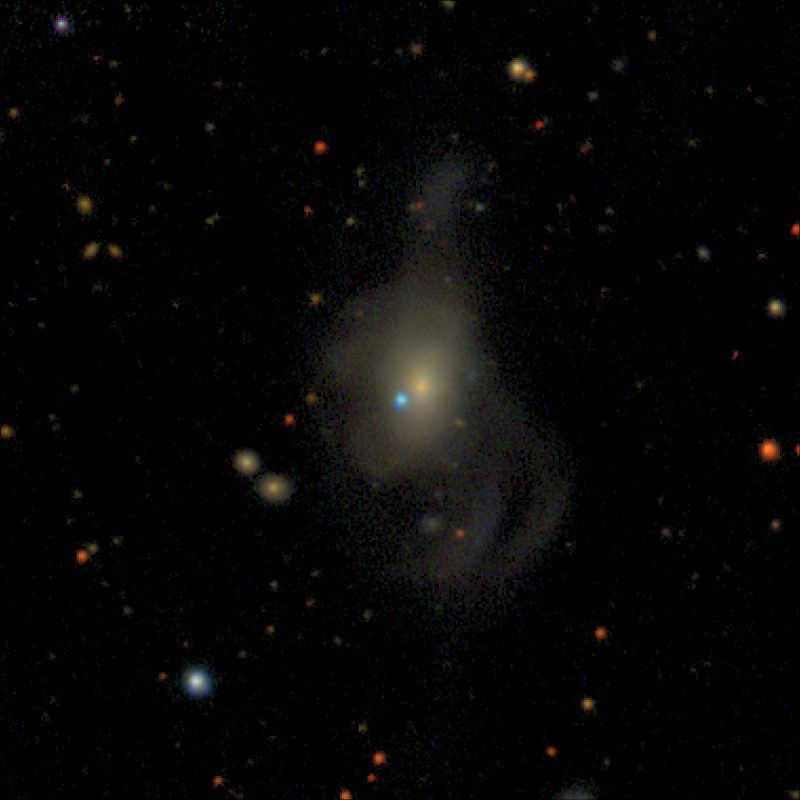Spectacular death of white-dwarf star lights up nearby galaxy
Posted on: 23 July 2020
For only the second time ever, astrophysicists have spotted a spectacular flash of optical and ultraviolet light accompanying a supernova – an incredibly luminous explosion of a white-dwarf star at the end of its life.
In this case, the flash of ultraviolet light was seen in a Type Ia (“one-A”) supernova, which occurs when a small dense white-dwarf star explodes.
Type Ia supernovae are used to measure distances in the Universe. They helped scientists discover that the expansion rate of the Universe is accelerating and that a mysterious quantity of dark energy is the main constituent of the Universe. This discovery using Type Ia supernovae was awarded the Nobel Prize in Physics in 2011.
Type Ia supernovae also offer insights into the formation of heavy elements such as iron and how this newly formed material is ejected at high velocities out into the Universe and is used to form the next generations of stars and planets.
This newly measured flash of light from a Type Ia supernova event is incredibly rare. Using the Zwicky Transient Facility (ZTF) in California, researchers first spotted the peculiar supernova in December 2019 — just a day after it exploded. The event, dubbed SN2019yvq, occurred in a relatively nearby galaxy located 140 million light-years from Earth, very close to the tail of the dragon-shaped Draco constellation.

The incredibly unusual flash was initially seen in the visible light with the ZTF search telescope. Within hours, astrophysicists used NASA’s Neil Gehrels Swift Observatory to determine there was also a luminous ultraviolet signal being produced by the event, suggesting a very hot explosion.
Kate Maguire, assistant professor in Trinity’s School of Physics, whose team was involved in the study, said:
“Sky surveys in the past decades have discovered many Type Ia supernovae and the vast majority are very well behaved. What’s very unusual here is the optical and ultra-violet flash that lasted just a few days. Analysis of this signal can be used to provide key insights into how exactly the star exploded.”
Lead author of the study, Dr Adam Miller from Northwestern University, added:
“Astronomers have searched for this for years and never found it. To our knowledge, this is actually only the second time an ultraviolet flash has been seen with a type Ia supernova.”
Dr Mark Magee, research fellow in Trinity’s School of Physics, performed simulations of how this rare supernova may have exploded. He said:
“It is clear from the ultraviolet flash that the supernova was incredibly hot. Such flashes are exceedingly rare and so some unusual physics must be occurring. Possibilities include the explosive detonation of helium on the star’s surface or hot clumps of iron producing gamma rays, but it’s not yet clear which scenario is more likely.”
The team has hypothesised a number of distinct scenarios that could cause a white dwarf to explode with an ultraviolet flash.
Professor Maguire said:
“What’s exciting now is that these scenarios predict different evolution of its properties during the next year. In particular, the models predict different quantities of calcium, oxygen, and iron to have been produced. We will watch the supernova carefully throughout this year to solve the puzzle of which scenario has occurred.”
“Once we know what caused the explosion, we can learn more about the birthplace of heavy elements such as iron. Understanding the ways in which a white dwarf explodes gives a more precise understanding of how iron is created and distributed throughout the Universe. This iron will be essential in building the next generations of stars and planets, just as iron from past supernovae was important in forming the Earth.”
